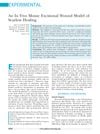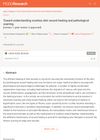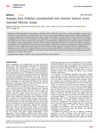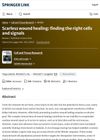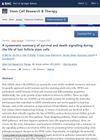An In Vivo Mouse Excisional Wound Model of Scarless Healing
January 2007
in “
The Year book of surgery
”
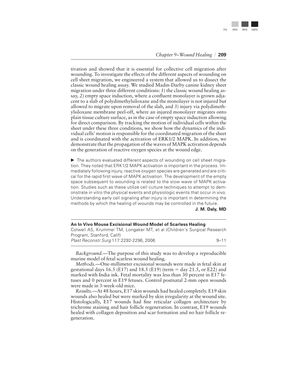
TLDR The mouse model shows potential for understanding and improving scarless wound healing, and Wnt-4 and TGF-β1 play a role in wound healing and scar formation.
The document presents two studies related to wound healing and scar formation. The first study developed a mouse model to investigate fetal scarless wound healing. Excisional wounds were made in fetal mice at gestational days 16.5 (E17) and 18.5 (E19), with E17 wounds healing completely within 48 hours and showing fine reticular collagen architecture and hair follicle regeneration, while E19 wounds healed with scar formation and no hair follicle regeneration. The study concluded that this mouse model could be useful for understanding the mechanisms of scarless wound healing and potentially manipulating scarring in adults.
The second study examined the expression of Wnt-4, a mitogen involved in scar formation, during fetal and postnatal wound repair. It was found that TGF-β1 stimulation increased Wnt-4 expression in both fetal and postnatal mouse fibroblasts, with a more significant and delayed peak in postnatal fibroblasts. Additionally, Wnt-4 expression was higher in E17 fetal skin compared to 3-week-old mice, with small increases during both fetal scarless and postnatal scarring wound repair. These findings suggest a role for Wnt-4 and TGF-β1 in the process of wound healing and scar formation.
